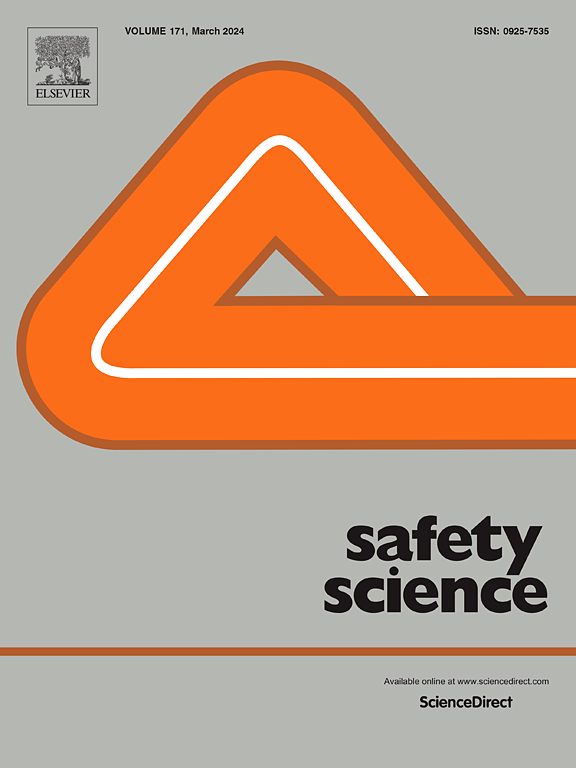模块化集成建筑中职业安全与健康的系统评价
IF 4.7
1区 工程技术
Q1 ENGINEERING, INDUSTRIAL
引用次数: 0
摘要
由于事故率高,建筑行业面临着提高效率和安全的压力。模块化集成结构(MiC)作为一种提高行业整体性能的可行手段受到了广泛关注。尽管MiC具有诸多优势,但由于其独特的特性,如非现场制造、标准化和专业组装工艺,它给职业安全和健康(OSH)带来了挑战。这些复杂性需要对职业安全与健康风险进行全面管理。尽管现有的研究已经解决了MiC中的一些职业安全卫生问题,但缺乏全面的审查,彻底涵盖了MiC整个生命周期的职业安全卫生危害、风险结果和管理策略。为了解决这一差距,我们按照系统评价和荟萃分析的首选报告项目(PRISMA)方法进行了系统文献综述(SLR),最终从Scopus和Web of Science (WoS)中确定了130篇相关文章。该SLR确定了MiC解决的职业安全卫生领域,与MiC相关的职业安全卫生危害类型和风险结果,控制层次,施工工作类型和MiC生命周期阶段,职业安全卫生管理使用的技术,MiC职业安全卫生管理面临的挑战,以及未来的研究方向。结果表明,MiC减轻和引入的最常被研究的危害分别是跌倒和与健康相关的危害。此外,在以往的研究中,行政控制是最常见的控制层次。这些深入的知识为从业者提供了与MiC相关的危害和风险结果的宝贵见解,同时强调了各种研究中用于减轻这些风险的技术。本文章由计算机程序翻译,如有差异,请以英文原文为准。
A systematic review of occupational safety and health in modular integrated construction
The construction industry is facing increased pressure to enhance efficiency and safety, owing to its high incident rates. Modular integrated construction (MiC) has gained significant attention as a viable means of enhancing the overall performance of the industry. Despite its numerous advantages, MiC presents occupational safety and health (OSH) challenges due to its unique characteristics, like off-site manufacturing, standardisation, and specialised assembly processes. These complexities necessitate comprehensive management of OSH risks. Although existing studies have addressed some OSH issues in MiC, a comprehensive review that thoroughly covers OSH hazards, risk outcomes and management strategies throughout the entire lifecycle of MiC is lacking. To address this gap, a systematic literature review (SLR) following the Preferred Reporting Items for Systematic Reviews and Meta-Analyses (PRISMA) approach was conducted, resulting in the identification of 130 relevant articles from Scopus and Web of Science (WoS). This SLR identified the OSH areas addressed by MiC, types of OSH hazards and risk outcomes associated with MiC, hierarchies of control, types of construction work and MiC lifecycle stages, technologies used for OSH management, challenges in OSH management of MiC, and future research directions. The results show that the most commonly researched hazards that have been mitigated and introduced by MiC are fall- and health-related hazards, respectively. Additionally, administrative controls are the most common hierarchy of control in the previous studies. This in-depth knowledge offers practitioners valuable insights into hazards and risk outcomes associated with MiC while emphasising the technologies used in various studies to mitigate these risks.
求助全文
通过发布文献求助,成功后即可免费获取论文全文。
去求助
来源期刊

Safety Science
管理科学-工程:工业
CiteScore
13.00
自引率
9.80%
发文量
335
审稿时长
53 days
期刊介绍:
Safety Science is multidisciplinary. Its contributors and its audience range from social scientists to engineers. The journal covers the physics and engineering of safety; its social, policy and organizational aspects; the assessment, management and communication of risks; the effectiveness of control and management techniques for safety; standardization, legislation, inspection, insurance, costing aspects, human behavior and safety and the like. Papers addressing the interfaces between technology, people and organizations are especially welcome.
 求助内容:
求助内容: 应助结果提醒方式:
应助结果提醒方式:


